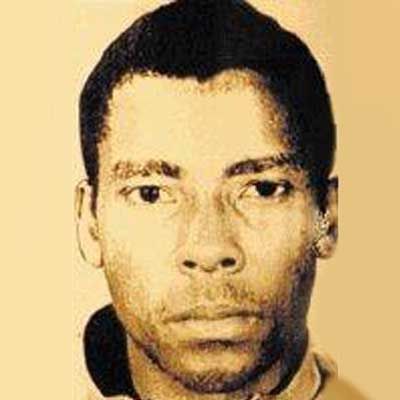
d: 1986
Andrew Sibusiso Zondo
Summary
Name:
Andrew Sibusiso ZondoYears Active:
1985Status:
ExecutedClass:
Mass MurdererVictims:
5Method:
BombingDeath:
September 09, 1986Nationality:
South Africa
d: 1986
Andrew Sibusiso Zondo
Summary: Mass Murderer
Name:
Andrew Sibusiso ZondoStatus:
ExecutedVictims:
5Method:
BombingNationality:
South AfricaDeath:
September 09, 1986Years Active:
1985bio
Andrew Sibusiso Zondo was born in either 1966 or 1967 in KwaMashu Township, near Durban, South Africa. He grew up in a working-class environment and attended Ngazane Lower Primary School, Phakama Higher Primary, and later Nhlakanipho High School. However, he did not complete his high school education.
From an early age, Zondo developed a strong interest in politics, shaped by the turbulent environment of apartheid-era South Africa. By the age of 16, he had joined the African National Congress (ANC), the leading anti-apartheid movement. Soon after, he went into exile. While his initial intention was to continue his studies abroad, he ultimately underwent military training in Angola as part of Umkhonto we Sizwe (MK), the ANC’s armed wing.
In exile, Zondo trained as a guerrilla fighter, preparing for armed resistance against the apartheid government. By the mid-1980s, he had become an MK operative in Durban, working with other cadres on operations targeting symbols of state power.
murder story
On December 20, 1985, the South African security forces conducted a raid in Lesotho, killing nine anti-apartheid activists. The incident enraged MK operatives, who sought to retaliate. Just three days later, on December 23, 1985, Andrew Zondo planted a limpet mine at the Sanlam Centre shopping mall in Amanzimtoti, a coastal town near Durban.
The mine detonated during the busy Christmas shopping season, killing five civilians, including two adults and three children, and injuring 161 others. One of the victims was Irma Bencini (48), who had gone shopping for Christmas supplies. Survivors later recalled the chaos and devastation inside the mall. Debbie Scott, Bencini’s stepdaughter, recounted how she heard the explosion only minutes after parting ways with her stepmother. She found Bencini’s body amid the wreckage, an image that haunted her family for decades.
The attack shocked South Africa and drew widespread condemnation, even from within the ANC. Oliver Tambo, then-president of the ANC in exile, publicly disapproved of targeting civilians, stating that such actions were against ANC policy, though he acknowledged the anger and context that led to Zondo’s decision.
Zondo evaded capture for several days but was arrested on December 29, 1985. Reports suggest his arrest followed close surveillance by security forces. He was tried in 1986, found guilty of the bombing and the resulting deaths, and sentenced to death. During the trial, it emerged that Zondo had allegedly admitted to an accomplice that he had been “disappointed in the body count, wishing it to have been higher.”
The presiding judge was Johan Theron, though later misattributed in some accounts to Judge Ramon Leon. Two co-accused individuals were acquitted in court but were later executed extrajudicially by the apartheid Security Branch.
Zondo’s execution was carried out by hanging at Pretoria Central Prison on September 9, 1986. He was only about 19 or 20 years old at the time.